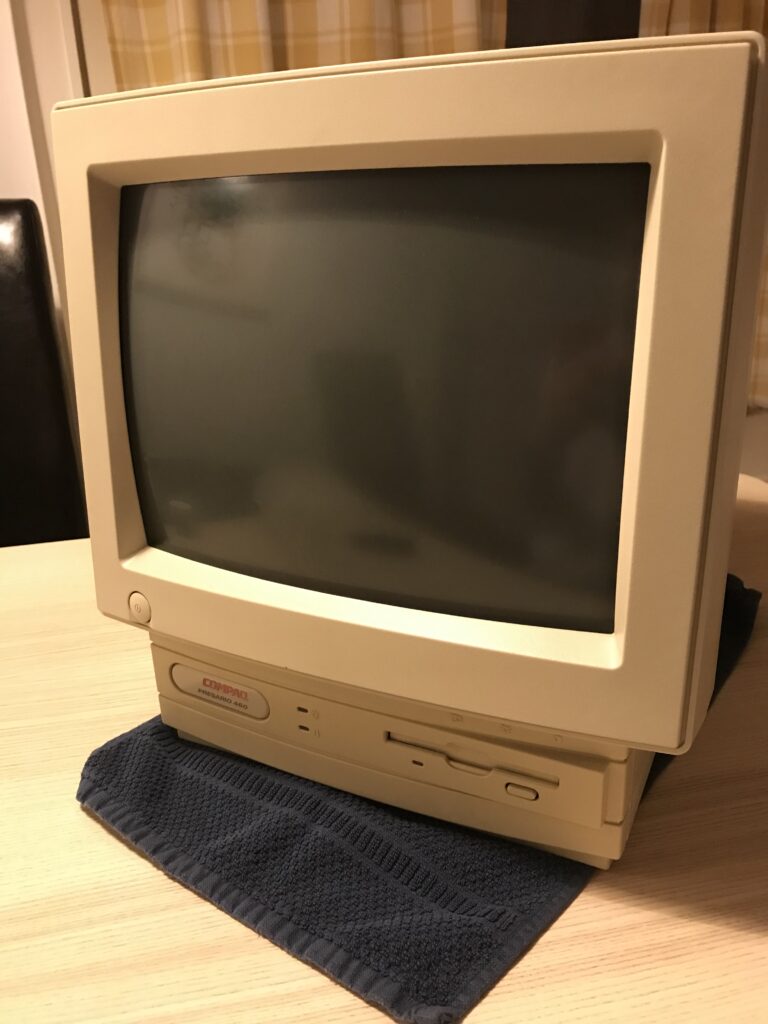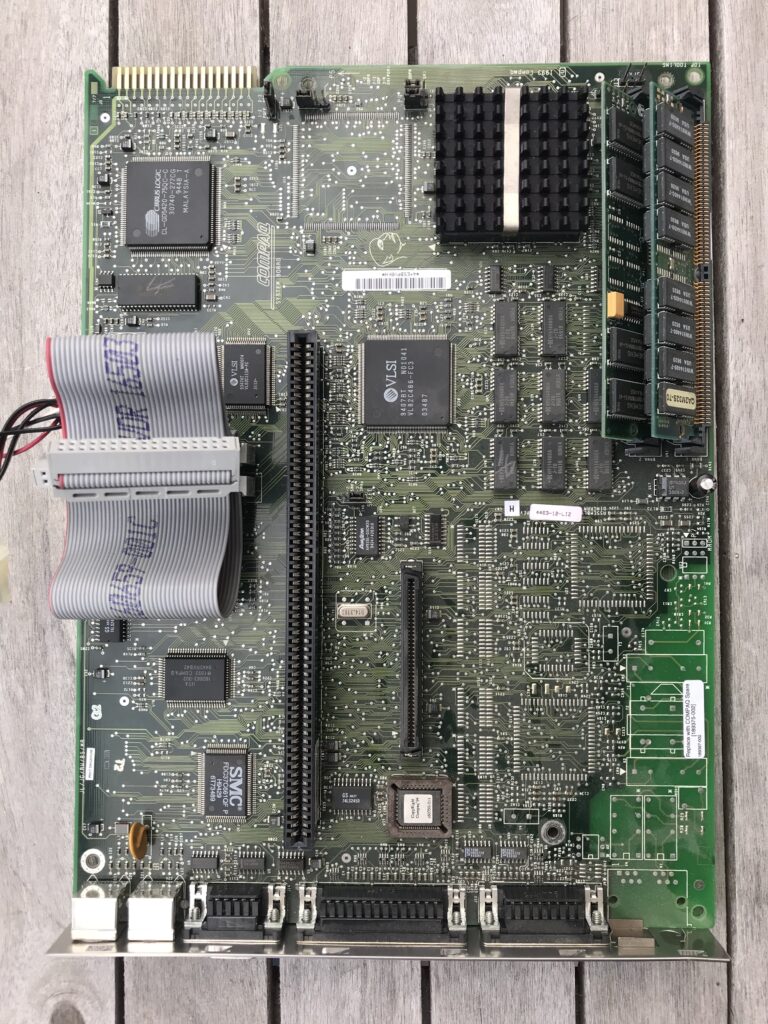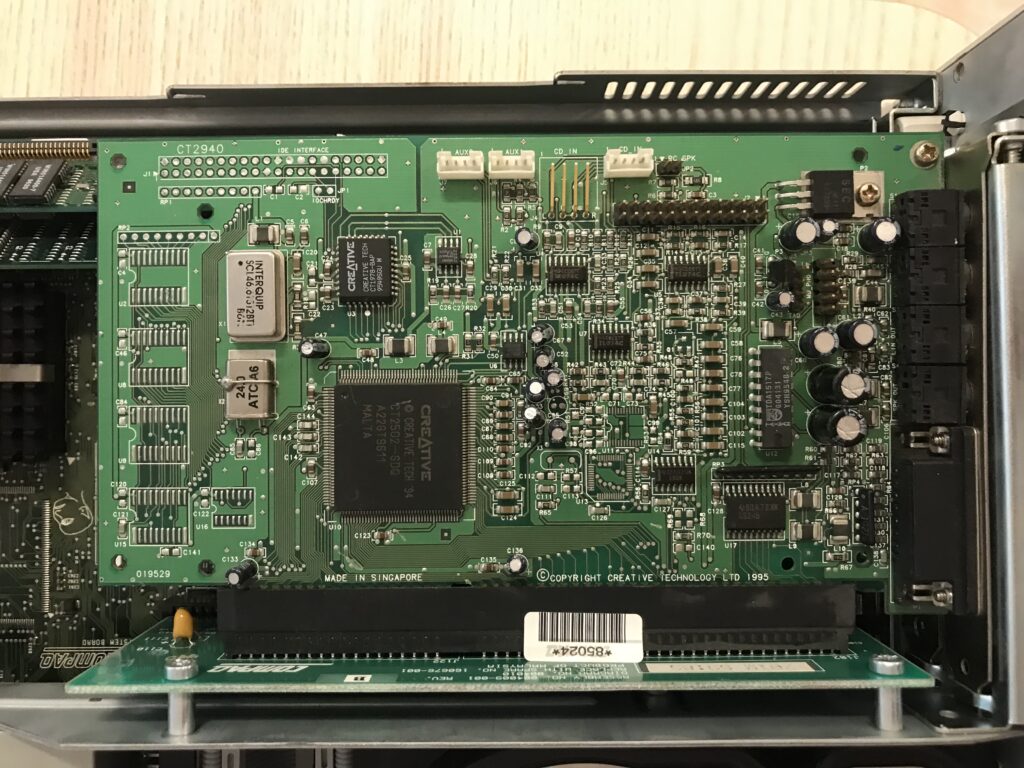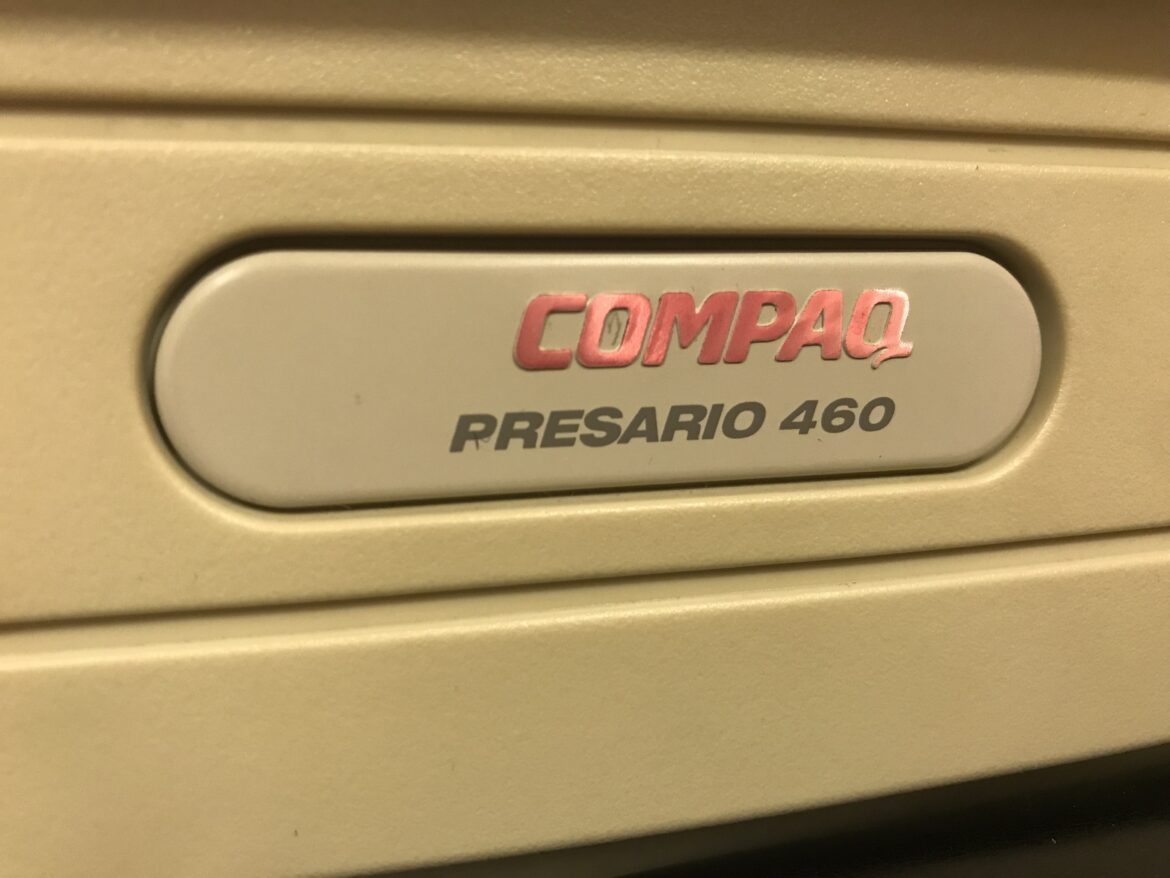I recently acquired a Compaq Presario 460 from Swedish eBay. I did not know this model existed before I saw it online. As a kid I owned a Presario 433 while my buddy owned a 425. A few years ago I bought a Compaq Presario CDS 520. The difference between the “CDS” range and the regular Presarios is that the former has integreated sound card + speakers, and a CD-rom drive. In this post, I will write some notes on the Compaq Presario 460.
Compaq Presario 460 specifications
On the Presario line of integrated computers the first number, “4”, stands for cpu type, in this case, the Intel 80486. The other number refer to the cpu speed. Interestingly, while the Presario 425 and 433 refer to the Intel SX 25 and 33 MHz cpu:s respectively, the “60” in this machine stands for Intel SX 66 MHz. I don’t know what Compaq did not call the machine “Presario 466”.

The 460 comes with a 270 MB IDE hdd, but mine has been upgraded (see below).
Four mb of ram can be found on the board, and it has a couple of memory slots to expand this amount with SIMM modules.
The integrated 14 inch SVGA compliant monitor is matched with a Cirrus Logic graphics unit capable of 1024×768 resolution, with 512 DRAM.
There are not a lot of expansion options for these units: 2x ISA slots is all you get. No 3.5 / 5.25 slots.
There is room for an integrated modem, but that slot is empty on my machine.
Ports: LPT, serial, ps2 mouse + keyboard, and a game port (but no integrated sound card).
These machines shipped with MS DOS 6 + Windows 3.1 with TabWorks and some Compaq utilities.
Now, let’s take a closer look at my machine.
My machine:
At first glance, my machine looks like the average Presario from the time: one of the ISA slots is occupied with a Sound Blaster 16 sound card, and a 3com network adapter is added for network access.

When I booted the machine, I noticed some oddities though:
- No sound drivers were installed.
- No mouse drivers were installed in Windows.
- MS DOS was installed directly under c:\ without any folder.
- No major software was installed except for some networking tools for MS DOS.
So, what was this machine used for? Interestingly, the folder with network tools contained software for accessing ftp:s, and internet relay chat (IRC) under MS DOS. So, my first thought was that this machine was someone’s attempt at using MS DOS for accessing the internet back in the 1990s. However, this was not the case. Three things stood out upon closer inspection, as noted in the images below:



Compaq Presario 460 mainboard
Below is the mainboard of the Compaq Presario 460. Two 72-pin SIMM slots to the right, accompanied by the CPU slot. The SX 66 CPU is covered by a heat sink. The large slot in the middle holds an separate card with 2x ISA slots. To the left is the IDE and floppy controller. Here, there are numerous options for expansion, such as:
- Installing an IDE cf-card.
- Adding an IDE cd-rom player with the aid of a looong IDE-cable (cd unit is positioned outside the computer).

This machine lacks a sound card, but mine came equipped with a Sound Blaster 16.

—
My conclusion is that someone had fun using this machine to access the internet via MS DOS and ethernet quite recently.
My plans for this Compaq Presario 460 is to re-create the setup I had back in the days:
- Re-install MS DOS 6.22 + Windows 3.11 + drivers etc (one day I might feel daring and install W95!)
- Re-do the bios battery modification.
- I’ll keep the (slow) SX cpu since I already have a dx2 66 MHz 486 in my CDS 520.
- Adding a LPT cd-rom. Back in the days, I owned such a solution. It performed quite poorly during video sequences in games due to the slow transfer speed of the parallell port of the Presario. I later upgraded to a regular CD-rom positioned outside the machine, via a loooong IDE-cable + Y-power cable.
